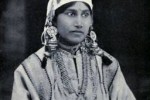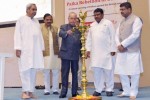 Odisha Channel Bureau Bhubaneswar, Aug 6: The National Dairy Development Board (NDDB) is planning to strengthen dairy farming in Odisha.NDDB’s efforts have always been geared towards involving more and more women in collective business and governance, according to an official release issued here on Wednesday.Apart from strengthening existing dairy cooperatives, formation of women dairy cooperatives and increased participation by women in existing cooperatives would be emphasised.Keeping this in view, NDDB is organising a national symposium on `Women Empowerment Through Dairying’ at Xavier Institute of Management, Bhubaneswar on August 7 and 8.The symposium would focus on building a sequential road map to nurture gender inclusive dairy cooperative institutions.Ranked 14th in the country, Odisha’s estimated milk production stood at 1.86 million tonnes in 2013-14, which is 1.4 per cent of national milk production.The cooperative dairies together procured 3.9 lakh kg per day in 2013-14, which is 1.1 per cent of country’s cooperative milk procurement.This represents 13 per cent of the estimated surplus (as against 18 per cent for the country as a whole).Presently, 20 per cent of inhabited villages are covered by cooperatives as against national coverage of 23 per cent.Therefore, there is considerable scope to increase coverage and provide greater market access to small milk producers of Odisha.In 2011-12, the per capita availability of milk in Odisha was 112 gms/day about one-third of the availability at all India level of 290 gms/day.In terms of milk production, the State has registered a growth of 6.2 per cent per annum during last decade ending 2012-13, higher than the national growth of 4.6 per cent.Liquid milk marketing by Odisha’s cooperative unions was 4.3 lakh kg per day in 2013-14, which is 1.6 per cent of the national cooperative liquid milk marketing.The processing capacity of cooperatives in the state was 5.45 lakh litres per day.The dominant category of dairy animal in Odisha is indigenous cows (mostly non-descript) – accounting for 74 per cent of total in-milk animals, followed by crossbred cows (17 per cent) and buffaloes (9 per cent).
Odisha Channel Bureau Bhubaneswar, Aug 6: The National Dairy Development Board (NDDB) is planning to strengthen dairy farming in Odisha.NDDB’s efforts have always been geared towards involving more and more women in collective business and governance, according to an official release issued here on Wednesday.Apart from strengthening existing dairy cooperatives, formation of women dairy cooperatives and increased participation by women in existing cooperatives would be emphasised.Keeping this in view, NDDB is organising a national symposium on `Women Empowerment Through Dairying’ at Xavier Institute of Management, Bhubaneswar on August 7 and 8.The symposium would focus on building a sequential road map to nurture gender inclusive dairy cooperative institutions.Ranked 14th in the country, Odisha’s estimated milk production stood at 1.86 million tonnes in 2013-14, which is 1.4 per cent of national milk production.The cooperative dairies together procured 3.9 lakh kg per day in 2013-14, which is 1.1 per cent of country’s cooperative milk procurement.This represents 13 per cent of the estimated surplus (as against 18 per cent for the country as a whole).Presently, 20 per cent of inhabited villages are covered by cooperatives as against national coverage of 23 per cent.Therefore, there is considerable scope to increase coverage and provide greater market access to small milk producers of Odisha.In 2011-12, the per capita availability of milk in Odisha was 112 gms/day about one-third of the availability at all India level of 290 gms/day.In terms of milk production, the State has registered a growth of 6.2 per cent per annum during last decade ending 2012-13, higher than the national growth of 4.6 per cent.Liquid milk marketing by Odisha’s cooperative unions was 4.3 lakh kg per day in 2013-14, which is 1.6 per cent of the national cooperative liquid milk marketing.The processing capacity of cooperatives in the state was 5.45 lakh litres per day.The dominant category of dairy animal in Odisha is indigenous cows (mostly non-descript) – accounting for 74 per cent of total in-milk animals, followed by crossbred cows (17 per cent) and buffaloes (9 per cent).
August 6, 2014
August 6, 2014
0 Comment
Related Articles:
- 5T Secretary reviews progress on CMO district visit grievance redressal
September 13, 2023, 11:47 am
- Patnaik announces Rs 10 lakhs each to Asian Game qualified Odisha athletes
September 13, 2023, 8:13 am
- Odisha CMO reviews grievances related to industrial development
September 12, 2023, 1:10 pm
- Odisha accelerates economic growth with approval of 9 key industrial projects
September 12, 2023, 4:02 am
- Odisha government is committed to welfare of animals: Patnaik
September 8, 2023, 4:18 pm
- Naveen Patnaik felicitates visually-challenged cricket players
September 8, 2023, 2:59 pm
- Odisha panchayat polls: Landslide victory for BJD, BJP distant second
March 1, 2022, 12:33 pm
- Hemananda Biswal: An inspiration for tribal leaders of Odisha
February 26, 2022, 5:17 am
- Hemananda Biswal passes away, to be cremated at his native place
February 26, 2022, 5:10 am
- Urban civic polls in Odisha to be held on March 24
February 25, 2022, 6:03 pm
Breaking News:
- Russia pummels exhausted Ukrainian forces with smaller attacks ahead of a springtime advance
April 19, 2024, 5:03 am - Emergency rooms refused to treat pregnant women, leaving one to miscarry in a lobby restroom
April 19, 2024, 4:01 am - Maryland high school student arrested after authorities discovered a 129-page document detailing school shooting plan, police say
April 19, 2024, 2:28 am - Israel attacks Iran, sources say, drones reported over Isfahan
April 19, 2024, 1:54 am - $80 million verdict for three workers fired for taking ‘off the record’ time off in California
April 18, 2024, 11:12 pm - Hear what Trump said minutes after jury was seated in hush money trial
April 18, 2024, 10:46 pm - Fact Check: People Are Claiming Trump Never Attended His Children's Graduations. Here's What We Found
April 18, 2024, 9:22 pm - Trump loses bid to halt Jan. 6 lawsuits while he fights criminal charges in the 2020 election case
April 18, 2024, 8:45 pm - 3 people arrested in kidnap, torture case in San Jose: police
April 18, 2024, 8:34 pm - Ilhan Omar's daughter mocked as 'psycho' after college suspends her for anti-Israel demonstrations
April 18, 2024, 8:33 pm


















